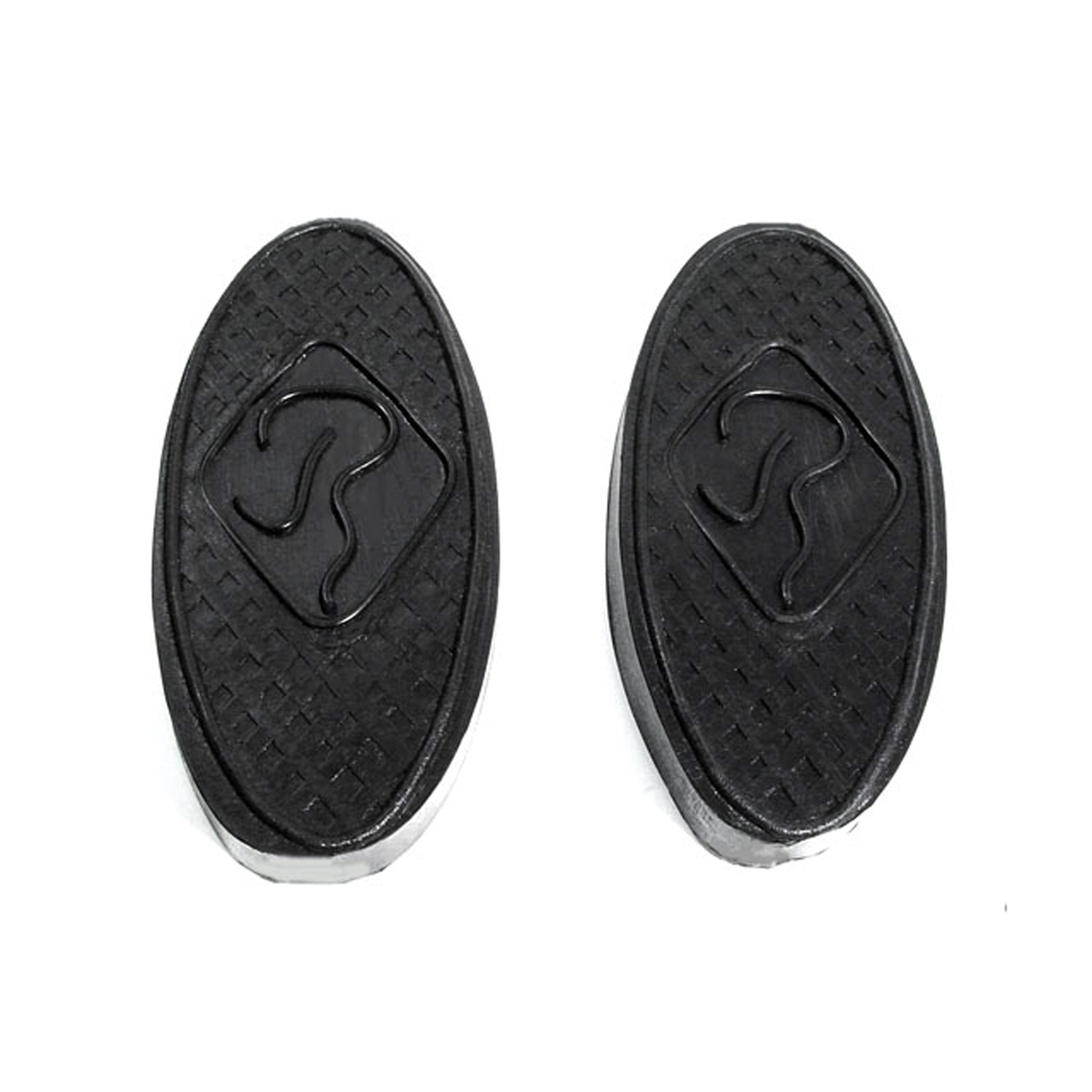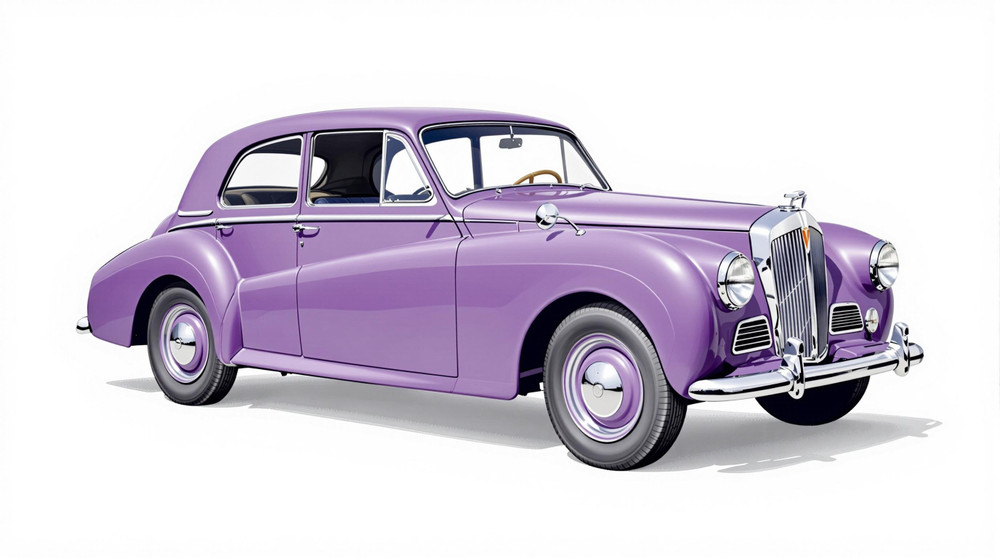Image of 1956 Riley Pathfinder, Note: These illustrations use artistic license and may differ from actual historical models.
Performance Metrics
Fundamental Metrics
Emotional Appeal
MMP Rating
| Engine Specifications | |
|---|---|
| Engine: | 2.5L 4-cylinder |
| Displacement: | 2443cc |
| Horsepower: | 110 hp |
| Torque: | 130 lb-ft |
| Compression Ratio: | 7.5:1 |
| Ignition System: | Coil ignition |
| Cooling System: | Water-cooled |
| Performance Specifications | |
| 0-60 Time: | 15 seconds |
| 1/4 Mile Time: | Not available |
| Top Speed: | 95 mph |
| Transmission and Drive | |
| Drive Type: | Rear-wheel drive |
| Transmission Type: | 4-speed manual |
| Fuel and Efficiency | |
| Fuel System Type: | Twin SU carburetors |
| MPG: | 20 mpg |
| Dimensions and Brakes | |
| Brakes: | Drum brakes |
| Wheelbase: | 111 inches |
| Weight: | 3100 lbs |
Note: Specifications for classic cars are given to the best of our ability, considering the limited and variant data available.
Unveiling the 1956 Riley Pathfinder: A British Engineering Marvel
The 1956 Riley Pathfinder stands as a testament to the ingenuity of post-war British automotive design. Born from the storied Riley marque, which began its journey in the early 20th century, the Pathfinder was a vehicle that encapsulated the optimism of its era. With its roots deeply embedded in the heritage of Riley's sporting pedigree, this car emerged as a symbol of sophistication and performance. A notable moment in its history was when it took on the mantle from the esteemed Riley RM series, marking a significant evolution in the manufacturer's lineup.
Design and Innovation: A Blend of Elegance and Functionality
The Pathfinder's exterior styling was a harmonious blend of sleek lines and robust proportions, exuding an air of British elegance. The distinctive grille and flowing fenders were hallmark traits that commanded attention on every road it graced. Inside, occupants were greeted with an interior that showcased craftsmanship through its use of premium materials such as rich leather and polished wood accents.
For its time, the Pathfinder was at the forefront of automotive technology, featuring independent torsion-bar front suspension and a live rear axle with half-elliptic leaf springs. Color options ranged from stately single tones to two-tone schemes that accentuated its contours, with Maroon and Black being particularly popular among enthusiasts.
The most iconic body style was undoubtedly the four-door saloon, which offered both luxury and practicality, making it a favorite among discerning buyers.
Historical Significance: Paving the Way for Modernity
The Riley Pathfinder's impact on automotive design was profound. It set a new standard for vehicles in its class by integrating advanced engineering with traditional craftsmanship. Its monocoque construction was innovative for Riley and influenced future designs within the industry.
Performance and Handling: A Symphony of Power and Poise
The Pathfinder boasted a spirited 2.5-liter four-cylinder engine that delivered robust performance for its day, with a top speed nearing 100 mph and capable acceleration from 0-60 mph in around 15 seconds. Its handling characteristics were praised for providing a confident grip on winding roads while maintaining composure over uneven surfaces. Drivers often reveled in the symphonic growl of its engine as they navigated through country lanes, enjoying a tactile connection with this mechanical masterpiece.
Ownership Experience: More Than Just a Car
The Pathfinder served various roles from a reliable daily driver to a distinguished participant at classic car shows. Maintenance required a certain level of dedication but was manageable for those familiar with vintage automobiles. Its reliability was commendable, though some components like the gearbox could be temperamental - characteristic of vehicles from this period.
Fun Facts: The Pathfinder's Unique Legacy
This classic car has seen its share of limelight with rare editions that collectors covet. While not known for breaking speed records, it held its own as a solid performer. Criticisms often centered around its weight and complex steering system but did little to diminish its appeal.
Collector's Information: A Prize for Enthusiasts
Today, the value range for a well-preserved 1956 Riley Pathfinder can vary greatly depending on condition, history, and originality. With production numbers estimated at around 5,000 units, it is relatively rare. The market has seen an appreciation for well-maintained Pathfinders, with prices ranging from $20,000 to $40,000 or more for pristine examples.
Conclusion: Celebrating the Legacy of the 1956 Riley Pathfinder
The 1956 Riley Pathfinder is more than just an automobile; it is an emblematic piece of British motoring history that continues to captivate enthusiasts worldwide. Its blend of style, innovation, and performance ensures that it remains a cherished classic in the automotive world.
1956 Riley Pathfinder Catalog of Parts
 1956 Riley Pathfinder Clutch and Brake Pedal Pads. 2-1/4" wide X 3-1/2" long-CB 49Clutch and Brake Pedal Pads. 2-1/4" wide X 3-1/2" long. Pair
1956 Riley Pathfinder Clutch and Brake Pedal Pads. 2-1/4" wide X 3-1/2" long-CB 49Clutch and Brake Pedal Pads. 2-1/4" wide X 3-1/2" long. Pair 1956 Riley Pathfinder Clutch and Brake Pedal Pads. 2-1/4" wide X 4-7/8" long-CB 50Clutch and Brake Pedal Pads. 2-1/4" wide X 4-7/8" long. Pair
1956 Riley Pathfinder Clutch and Brake Pedal Pads. 2-1/4" wide X 4-7/8" long-CB 50Clutch and Brake Pedal Pads. 2-1/4" wide X 4-7/8" long. PairWhy Choose Metro?
For over 100 years, Metro Moulded Parts has been the pinnacle of quality in classic car restoration parts. Our commitment to precision and authenticity in every component ensures a perfect fit and an OEM-level appearance.
- Expert Craftsmanship & Quality: Each part is a testament to our dedication to reliability and perfection, crafted from original designs and thoroughly tested.
- Advanced Technology: We use cutting-edge techniques to create flawless, long-lasting parts that surpass others in performance.
- SuperSoft Sponge – The Ultimate Door Seal: Not only are our door seals 30% softer than competitors', but they're also guaranteed to never leak. They effectively reduce wind and road noise, enhancing your classic car's comfort and driving experience.
- Proudly American: Our parts are a product of American craftsmanship, made in the USA with a spirit of excellence and heritage.
- Unrivaled Warranty: We back our products with a 30-year industry-leading warranty, a testament to our confidence in their quality.
Join us in preserving the legacy of classic cars with parts that are crafted for perfection, not just made.

